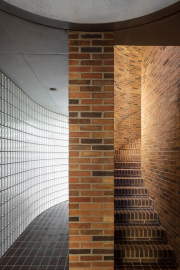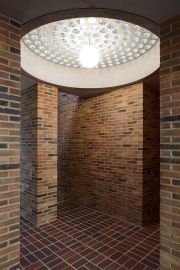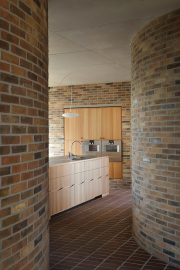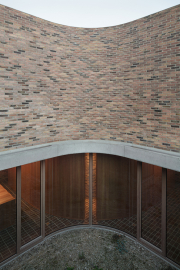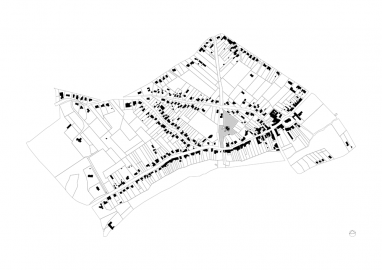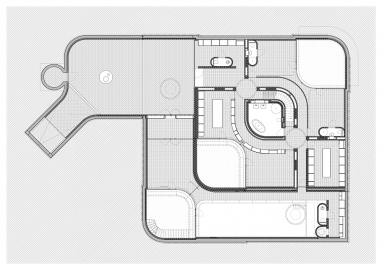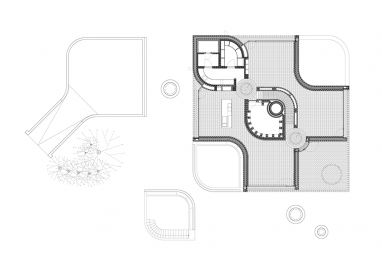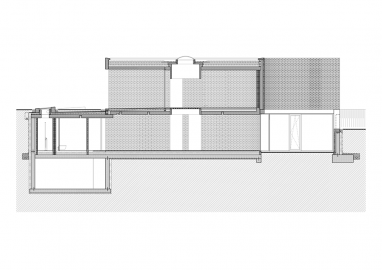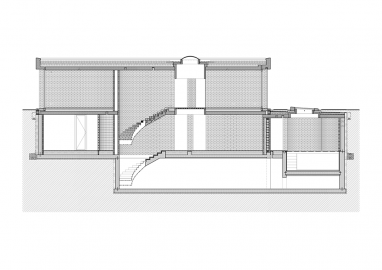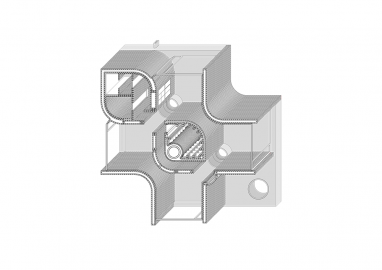House H
The project is a non-invasive single family house in the middle of a rural building block. Although mainly underground, it looks out over the surroundings. The main asset is the logical tectonic structure, which gives birth to both the spatial and -via the precise use of brick as main building material- the tangible qualities of the house.
The context of the house is a (once) typical Flemish village; it is a context that becomes rare in the allotted Flemish region. The trees along an abandoned tram line define the main axis of the house. The positioning of the house on top of a gentle hill allows the users to capture all the interesting views from within the living quarters.
The clients’ brief asked for a free-standing single family house -an assignment that in itself is under scrutiny in built over Flanders. A strong and consciously tectonic structure -rather than some kind of ‘Flemish normality’ bricolage- mediates between the program and the materiality. Bricks in a color scheme that matches the tree stems in the surrounding area, concrete roof and floor slabs and wooden windows define most of the modest presence of the house - outside and inside.
Apart from the contextual elements and the clients’ needs, there were very few constraints. That is why some constraints were deliberately selected. First, because of the interesting views in basically all directions, a pavilion type house proved to be the most fitting solution. To obtain a minimal impact on the surroundings, this volume was positioned mainly underground. Next, the balance between the tectonic structure of the house and its program was defined and refined, which resulted in a grid-like plan with rounded corners. Spaces merge into one another both horizontally and vertically. Patios and strategically placed concrete skylight-domes light up the rooms, as well as wall-to-wall windows. The logic of the structure is accentuated and extended via the exact use of brick as the key building material. Everything -the length of inner walls (curved or straight), the height of ceilings …- is proportioned according to the masonry bond. It gives the building its unique consistency.
The walls are either brick or glass (in wooden windows or as glass tiles), the floor slabs are in concrete, and the floors are covered in the same kind of brick as the walls (the same size, only thinner). Subtle changes in the masonry bond indicate which parts of the walls are loadbearing and which parts are hollow and contain technical installations.
All walls are generously insulated, which makes it a house that is almost a passive house. Natural building materials and -because of the fact that more than half of the volume is underground- a low impact on the environment add to the eco-efficiency of the house, and so does the use of a heat pump.
Although the structure -two levels ordered within the same grid- is logical, some very specific features make it a unique building which invites its inhabitants to use it in unexpected ways. It is not just a flexible house or a simple frame: because of its presence and its practical potential, it really takes part in the act of dwelling.
Text by Roel de Ridder

